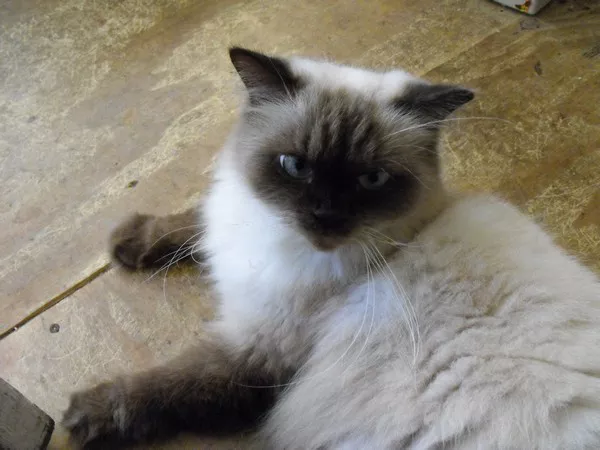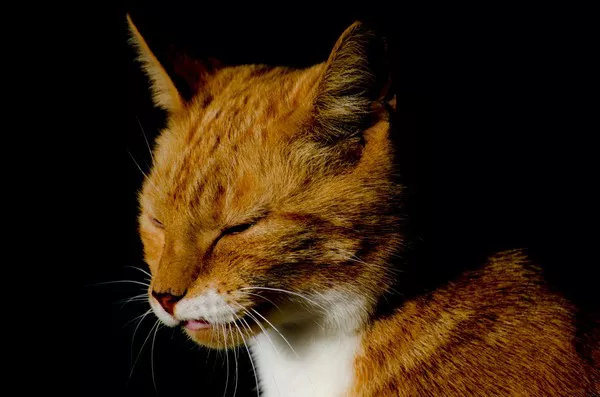Cats are curious creatures, and their inquisitive nature often leads them to explore their environment in ways that can be harmful to both themselves and the plants around them. One common issue faced by cat owners is the tendency of cats to bite or chew on houseplants. While some plants are harmless, many can be toxic to cats, leading to serious health risks. Understanding why cats exhibit this behavior and implementing effective strategies to deter them from biting plants is essential for ensuring the safety and well-being of your feline friend. This essay will delve into the reasons behind plant biting, the dangers involved, and practical solutions to help you create a safe and harmonious home for both your cat and your plants.
Understanding Why Cats Bite Plants
Natural Instincts
Cats are instinctual hunters and explorers. Their natural behaviors include chewing and biting as a way to explore their environment. Plants may attract cats due to their texture, smell, or movement, especially if they are in an accessible location. Understanding this instinct is crucial for addressing the behavior.
Curiosity
Cats are inherently curious animals. They use their mouths to investigate new objects, including plants. This curiosity can lead them to nibble on leaves or stems, especially if they are drawn to the plant’s scent or movement.
Boredom and Lack of Stimulation
A bored cat may seek out new activities to occupy their time, including chewing on plants. If a cat does not have enough mental and physical stimulation, it may resort to destructive behaviors, including plant biting. Providing adequate playtime and stimulating environments can help mitigate this behavior.
Nutritional Deficiencies
Some cats may chew on plants due to nutritional deficiencies in their diet. Cats are obligate carnivores, but they may instinctively seek out certain plant materials to supplement their diet. This behavior can be particularly evident in cats that are not receiving a balanced diet or those with specific health needs.
Teething
Kittens, in particular, may bite or chew on plants as a way to relieve discomfort associated with teething. Just like human infants, kittens go through a teething phase where their baby teeth fall out and adult teeth come in. Chewing can provide relief during this uncomfortable time.
Pica Disorder
In some cases, cats may develop a condition known as pica, characterized by the compulsive eating of non-food items. This can include chewing on plants, fabric, or other materials. Pica can be caused by boredom, stress, or nutritional deficiencies and may require veterinary intervention if it becomes a persistent issue.
The Dangers of Plant Biting
Toxicity
One of the most significant dangers of plant biting is the risk of toxicity. Many common houseplants are toxic to cats, and ingesting even small amounts can lead to serious health problems. Some toxic plants include:
Lilies: Extremely toxic to cats, even small amounts can cause kidney failure.
Pothos: Can cause oral irritation, vomiting, and difficulty swallowing.
Philodendron: May lead to oral irritation, pain, and swelling.
Sago Palm: Highly toxic, ingestion can cause liver failure and death.
Digestive Issues
Even non-toxic plants can cause digestive upset in cats. Ingesting large amounts of plant material can lead to vomiting, diarrhea, or other gastrointestinal issues. This can be particularly concerning if a cat has a sensitive stomach or underlying health problems.
Physical Injuries
Cats that chew on plants may also be at risk for physical injuries. Sharp edges of leaves or thorns can cause cuts or injuries to the mouth, throat, or digestive tract. This can lead to pain, infection, or other complications.
Behavioral Issues
Allowing plant biting to continue unchecked can lead to more significant behavioral issues. If a cat learns that chewing on plants is acceptable, it may extend this behavior to other household items, leading to further destruction.
Effective Strategies to Prevent Plant Biting
Choose Cat-Safe Plants
One of the most effective ways to prevent plant biting is to select plants that are safe for cats. Consider incorporating the following cat-friendly plants into your home:
Cat Grass (Wheatgrass): A safe and healthy option that many cats enjoy chewing on.
Spider Plant: Non-toxic and can be a fun plant for cats to interact with.
Boston Fern: Safe for cats and adds greenery to your home.
Bamboo Palm: A non-toxic plant that is also pet-friendly.
By providing safe alternatives, you can satisfy your cat’s natural chewing instincts without putting their health at risk.
Secure and Conceal Toxic Plants
If you have toxic plants in your home, it’s essential to secure and conceal them to prevent your cat from accessing them:
High Placement: Place toxic plants on high shelves or in hanging planters where your cat cannot reach them.
Use Barriers: Consider using decorative screens or barriers to keep cats away from specific plants.
Room Restrictions: If necessary, restrict access to certain rooms where toxic plants are located.
Provide Alternatives for Chewing
Offering appropriate alternatives for your cat to chew on can help redirect their behavior away from plants:
Cat Chew Toys: Provide a variety of chew toys made specifically for cats. Look for toys designed to satisfy their chewing instincts, such as rubber toys or dental chews.
Cat Grass: Plant cat grass or buy it from pet stores. This provides a safe option for your cat to chew on and can help deter them from biting other plants.
Increase Environmental Stimulation
Ensuring that your cat has a stimulating environment can help reduce boredom and anxiety, which may lead to plant biting:
Interactive Toys: Invest in interactive toys that engage your cat’s hunting instincts. Puzzle toys, treat-dispensing toys, and battery-operated toys can provide hours of entertainment.
Playtime: Dedicate time each day to play with your cat. Use toys like feather wands, laser pointers, or balls to encourage active play. This interaction strengthens your bond and provides necessary exercise.
Vertical Space: Cats love to climb and explore. Providing cat trees, shelves, or window perches can give them a sense of security and a place to observe their surroundings.
Use Deterrents
If your cat continues to bite plants, consider using deterrents to discourage the behavior:
Bitter Sprays: Apply bitter-tasting sprays designed for pets on the leaves of plants. These sprays can deter cats from chewing due to their unpleasant taste.
Citrus Scents: Cats generally dislike citrus scents. Placing citrus peels or using citrus-scented sprays around plants may help keep them away.
Address Anxiety and Stress
If your cat is biting plants due to anxiety or stress, it’s essential to identify and address the underlying causes:
Safe Spaces: Create a safe, quiet space for your cat where they can retreat when feeling stressed. This could be a cozy bed in a secluded area of the home.
Calming Products: Consider using calming products, such as pheromone diffusers, sprays, or calming collars, which can help reduce anxiety in cats.
Routine: Establishing a consistent daily routine can help your cat feel more secure. Regular feeding, playtime, and interaction can alleviate stress.
Training and Redirection
Training your cat to avoid biting plants can be effective, especially if combined with redirection techniques:
Positive Reinforcement: Use positive reinforcement to encourage desirable behaviors. When your cat plays with their toys instead of plants, reward them with treats or affection.
Gentle Corrections: If you catch your cat in the act of biting a plant, gently redirect them to a toy or another activity. Avoid yelling or physical punishment, as this can increase anxiety and worsen the behavior.
Monitor and Supervise
Keeping an eye on your cat can help prevent plant biting before it becomes a habit:
Supervision: When you are home, supervise your cat to discourage plant biting. If you catch them in the act, redirect them to appropriate toys or activities.
Crate Training: If you cannot supervise your cat, consider using a crate or a safe room where they cannot access plants. Ensure the space is comfortable and contains toys to keep them occupied.
Consult a Veterinarian
If your cat’s plant biting persists despite your efforts, it may be time to consult a veterinarian:
Health Assessment: A veterinarian can assess your cat’s health to rule out any underlying medical issues that may be contributing to the behavior, such as nutritional deficiencies or dental problems.
Behavioral Guidance: A veterinarian or a certified animal behaviorist can provide additional guidance and strategies tailored to your cat’s specific needs.
Conclusion
Preventing plant biting in cats is essential for their safety and the protection of your home. Understanding the underlying reasons for this behavior, such as natural instincts, boredom, and anxiety, allows cat owners to implement effective strategies to deter it. By choosing cat-safe plants, securing toxic plants, providing alternatives, increasing environmental stimulation, and addressing anxiety, you can create a safe and enriching environment for your feline friend.
Monitoring and supervising your cat, along with positive reinforcement training, can further help in redirecting their chewing behavior. If problems persist, consulting a veterinarian can provide valuable insights and solutions. By taking proactive steps, you can ensure that your cat remains safe and healthy while satisfying their natural curiosity and chewing instincts. With patience and persistence, you can create a harmonious living space where both your cat and your plants can thrive.
Related topic:

























